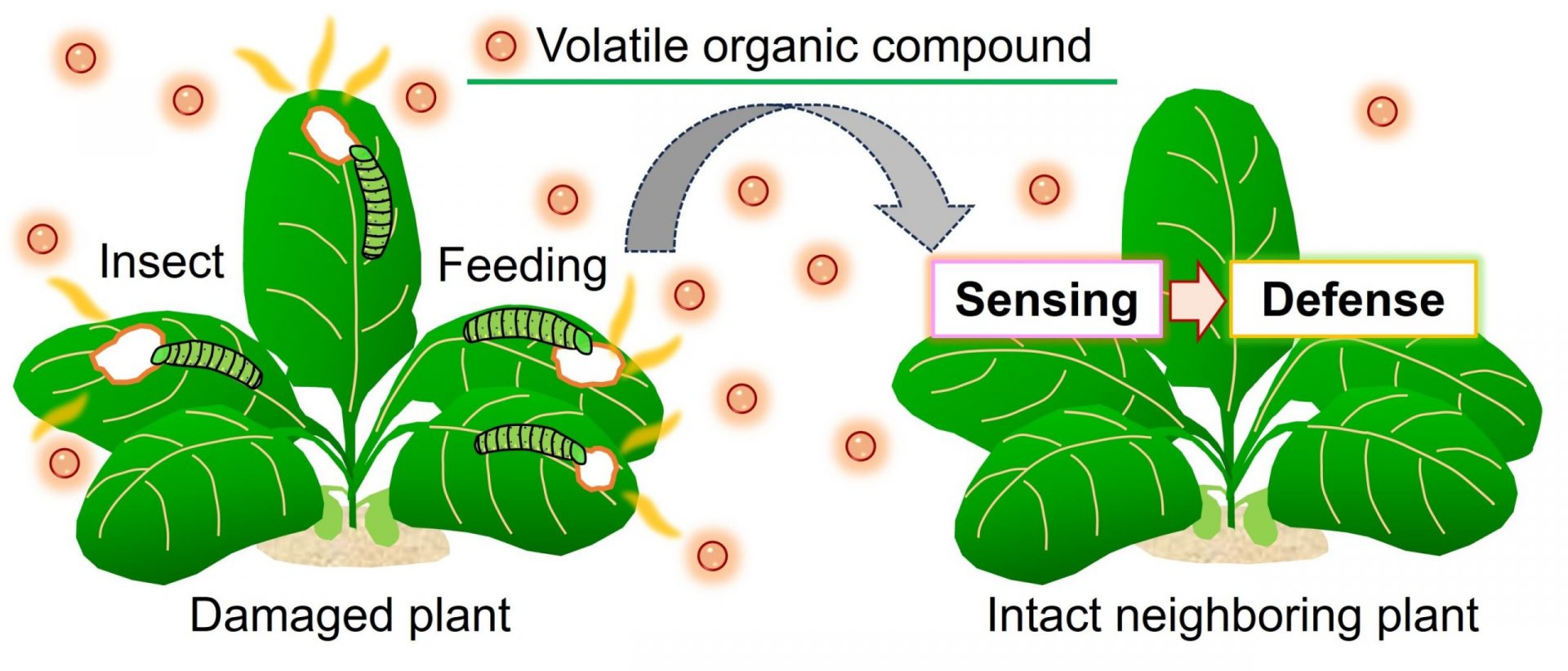Plants have a secret language that they use to communicate with each other, and it’s all thanks to volatile organic compounds (VOCs). When a plant is damaged by insects or other mechanical forces, it releases VOCs into the air as a distress signal. Nearby plants pick up on these signals and activate their defense mechanisms to prepare for the impending threat. This incredible phenomenon, known as airborne communication, was first discovered in 1983 and has since been observed in over 30 different plant species.
But how exactly do plants perceive these VOCs and initiate their defense responses? A team of researchers led by Professor Masatsugu Toyota from Saitama University in Japan set out to answer this question. In a groundbreaking study published in Nature Communications, they visualized plant-plant communication in real time and uncovered the molecular mechanisms behind VOC perception and defense induction.
Using a specially designed setup, the researchers pumped VOCs emitted by caterpillar-damaged plants onto undamaged neighboring plants. They then used a fluorescent imaging system to observe the plants’ response. The results were astonishing. Burst of fluorescence spread through the plants, indicating the activation of defense responses triggered by the VOCs.
The researchers also identified the specific VOCs responsible for inducing these defense responses. Two VOCs, (Z)-3-hexenal (Z-3-HAL) and (E)-2-hexenal (E-2-HAL), both six-carbon aldehydes, were found to be the key players. These chemicals, known as green leaf volatiles (GLVs), are emitted by plants when they are damaged by insects or other herbivores. When Arabidopsis plants were exposed to Z-3-HAL and E-2-HAL, their defense-related genes were upregulated, indicating a heightened state of readiness.
To further understand the relationship between VOC perception and defense responses, the researchers treated Arabidopsis plants with chemicals that inhibit calcium (Ca2+) signaling. They found that suppressing Ca2+ signals also suppressed the induction of defense-related genes, providing evidence that Arabidopsis perceives GLVs and activates defense responses in a Ca2+-dependent manner.
The researchers also discovered that the entry of GLVs into leaf tissues is facilitated by stomata, small pores on the surface of plants. Guard cells, which control the opening and closing of stomata, play a crucial role in this process. When exposed to GLVs, guard cells generate Ca2+ signals within a minute, followed by mesophyll cells and then epidermal cells. This sequential response ensures that the plant is prepared to defend itself against potential threats.
The implications of this research go beyond the world of plants. It highlights the incredible adaptability of nature and the intricate web of communication that exists between living organisms. By unraveling the secrets of plant-plant communication, we gain a deeper appreciation for the resilience and interconnectedness of life on Earth.








